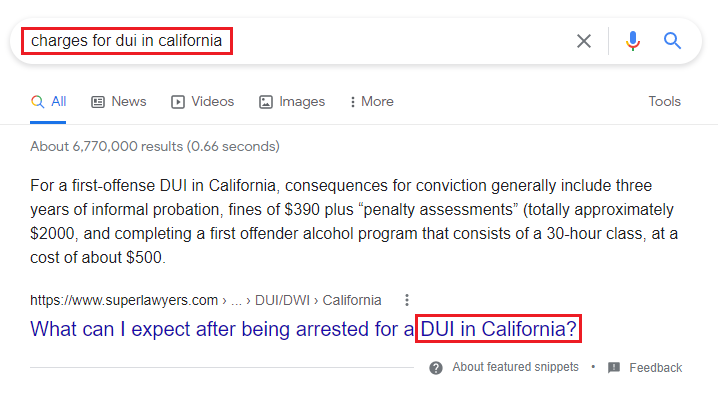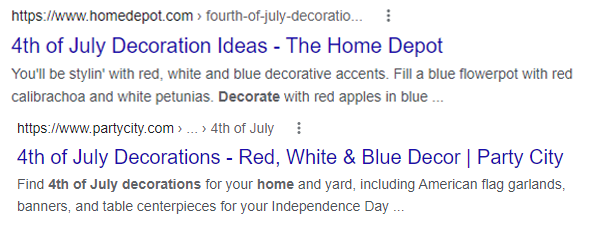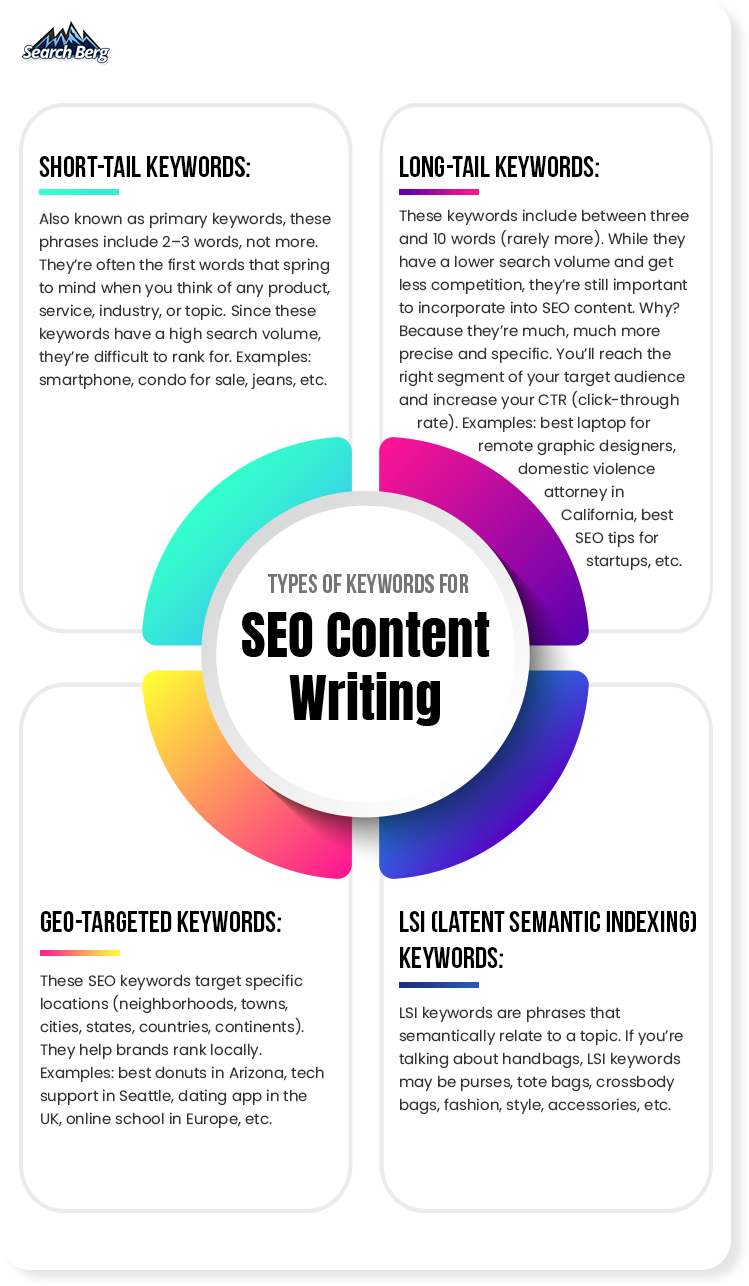Writing Content for SEO: Beginner’s Guide to SEO Content Writing
Kickass website? Done. Trendy social media pages? Check. Optimized Google My Business listings? On track. SEO content? Still in a state of limbo.
If this reflects your current marketing state, you’re in trouble. In 2022, engaging, exciting, and value-added content is the single most requested accessory on the web.
Sure, your audience wants quality products and services. Of course, they want top-notch customer care. But beyond that, they’re looking for brilliant content that packs the right amount of information, a dash of humor and wit, and a slice of the latest industry-related trends.
Are you delivering?
If not, that’s exactly what we’re here for. Follow us as we walk you through the basics of SEO content writing. What is it? Why does your business need it? What’s the recipe for creating content that engages, excites, informs, and converts? As a small business or startup, which SEO content writing tools should you use to kick things off the right way?
We’re breaking it all down.
Table of Contents
Writing Content for SEO? Why Is It So Important?
Need fresh SEO content that gets your sales back on track? We’re here to help! Fill out the form below for a free proposal.
Writing Content for SEO? Why Is It So Important?
SEO (search engine optimization) is the process of optimizing your web presence for Google searches.
Think of Google as a hard-to-please boss. As an employee, you’re expected to knock their socks off. Here’s the catch. Every employee has the same intention. If you don’t stand out, you won’t make the big splash you have in mind. So you optimize the way you work to earn some brownie points.
This is SEO in a nutshell!
You’re competing with millions and millions of websites. If you don’t go the extra mile to impress the Google algorithm, you’re toast. So what do you do? You optimize every aspect of your site: on-page, off-page, and technical. From the content to your social media pages to the images you display on your site, everything needs to be altered for Google search.
This will help you:
- Rank higher on Google SERPs (search engine result pages)
- Become more visible on and off the web
- Earn more traffic
- Turn casual web visits into conversions
- Strengthen your brand identity
- Earn more returning customers
- Outdo your competition
- Become an industry expert
If you’re interested in learning more about SEO, we have the perfect video right here:
Now back to SEO content. Content is just one of the many things you can optimize to stand out. Today, more and more web users want brilliant content. Needless to say, more and more brands are delivering!
Web pages are packed with millions of blogs, articles, and web copy. If you want your stuff to stand out, you have to optimize it.
Let’s consider an example. When a web user searches for “charges for DUI in California”, they’ll receive a set of the most relevant results. If you’ve written a well-researched blog and gone the extra mile to optimize it using the right keywords, a strong link structure, and so on, it will show up on the first page.
Here’s the first search result for this example:

As you skim through this blog, you’ll notice that they’ve checked off all the optimization boxes (we’ll tell you what these are in a bit).
SEO content helps you make your way to the top SERPs. The outcome? More clicks, more sales, and a shiny reputation.
As a small business or startup, that’s exactly what you want. Powerful sales and credibility will steer your business toward long-term growth.
Your Guide to SEO Content Writing
1. Keep Two Things in Mind: Industry and Audience
Before you kick things off, ensure you understand exactly what you’re writing and who you’re writing for. Many brands make the mistake of producing irrelevant content that fails to even reach their audience, let alone fetch conversions.
First things first: understand your industry and audience. Your content should fall right in the middle.

If you brainstorm a content idea that falls within your industry, but your audience doesn’t care about it, toss it. And if you come up with something that would excite your audience but isn’t relevant to your industry, ditch it.
Effective SEO content appeals to the target audience and remains within the premises of the brand’s industry.
2. Set up a Blog Page
If you haven’t already, set up a blog page on your website. You can reach out to web development specialists for help. Make sure the design is modern, visually appealing, and in line with what your target audience wants.
Remember, before a web user starts reading content, they get an eyeful of what the page looks like. If the formatting, layout, design, navigation, font, and color scheme are off-putting, web users will “bounce” off the site.
Optimize the page before you start posting content. Choose simple navigation, use a CDN (content delivery network) to speed things up, make the page mobile-friendly, and reduce the number of plugins. This will go a long way in helping your content achieve its purpose!
3.Brainstorm Smart, Trendy, Relevant Topics
Your content is only as good as the topics. If you choose boring, irrelevant, or repetitive topics, you’ll fail to “build” an audience around your content.
The goal is to engage web users multiple times and form a loyal base of readers.
Here’s how you keep things relevant.
Let’s say you run a law firm in Wyoming. Once you’ve covered regular topics related to your services, start branching out into trending topics.
The Gabby Petito case gained nationwide recognition. During the investigation, many law firms published blogs, articles, and guest posts about the case.

Each of these blogs informs audiences and redirects them to the respective legal services. Instead of sensationalizing the case, they respectfully cover it while offering new insight and helping people hire a lawyer if they’re struggling with something similar.
If these firms had just released a blog about domestic violence charges, it wouldn’t have caught people’s attention the same way.
SEO content writing is all about relevance. To reach your target audience, you must understand what they’re interested in and actively research online. If the topic is difficult or controversial, find a way to cover it respectfully and neutrally.
Here’s another example. Many brands released blogs about the exciting holiday leading up to the Fourth of July holiday. We’ll focus on interior design in this example. These businesses artfully managed to reel in web users over the holiday weekend:

Home Depot redirected readers to their holiday décor items, while Party City followed suit and highlighted their festive interior design collection.
Keep popular events, trends, and news in mind as you research new topics.
If you offer hair salon services, you could write a blog about Bridgerton-inspired hairstyles (this show has taken over in 2022).
If you provide tech support, write a Black Mirror-themed blog (another brilliant sci-fi show).
Run a winery? Cover upcoming wine festivals.
And if you run a British online school, find a way to sneak Wimbledon into the topics (perhaps a blog about how your school promotes academic and sporting growth).
Creative titles will help your content rank higher on Google SERPs and reach your target audience. If the titles are catchy, exciting, and relevant, you’re in for a swarm of impressions, clicks, and sales!
If you’re stumped, use SEO content writing tools like Google Trends to discover the top trends and stay on top of your game.
Recommended Read: 4th of July Marketing Tips and Ideas for Your Small Business
Struggling to come up with clever titles? Our experts will do the work for you! Your free proposal is a few clicks away.
4.Earn Visibility with Keywords
Keywords are to SEO content what water is to fish: absolutely necessary. You can’t expect to reach your target audience without using the very search terms they’re entering on Google!
Around Halloween, Google earns millions of search queries about how to make Halloween-themed treats. These are some common search terms:

Now, if you run a bakery, you’ve hit the jackpot. By incorporating these keywords into your content, you can boost your rankings.
Here’s a great example:

You’ll find relevant keywords scattered across the blog as you keep reading. The CTA (call-to-action) specifically packs two high-volume keywords: a) Halloween cake in NYC and b) spooky Halloween cake ideas in NYC.

Location? Specified. Holiday theme? Covered. This is the right way to write SEO-friendly blog posts that rank!
Start by understanding which keywords you need to focus on. We recommend incorporating these four types of SEO keywords into your content.

Schedule a consultation with our experts for a custom keyword strategy based on your industry, business model, products/services, and target audience. We’ll help you understand the right keyword ratio for different types of content.
5. Add Clean, Compelling Media to Your Content
Visual content is a winner any way you look at it. If you want your audience to fall in love with your content, spruce it up with media!
Blogs with supplementary pictures, videos, and infographics perform better.
Kohl’s is known for releasing top-ranking blogs that pack the power of media! Their recent blog, 12 Father’s Day Gift Ideas for 2022, is a masterclass in powerful imagery.

They’ve masterfully listed a set of products and included high-quality images for each. The blog isn’t overpowering. In fact, it’s the perfect mix of clean, modern, and visually engaging.
Kohl’s has gone the extra mile and optimized the images to give the blog a nice boost on SERPs. As you click on each image, you’re redirected to its product page. The images are also optimized with relevant alt text and filename.
This is how you write SEO-friendly blog posts that visually satiate your audience!
Recommended Read:5 Ways You Can Increase Your Blog’s Traffic in 2022
6. It’s All About the CTA…
You’ve written spectacular content. Now what? If you don’t wrap things up with a powerful CTA (call-to-action), you’re putting your SEO handiwork to waste. Not the best idea.
So what is a CTA? This 2–3 liner concludes every content piece, whether it’s a blog, article, guest post, or cluster blog. The CTA incites action. You’ve made your point; now it’s time to redirect your audience towards your products/services, social media pages, sign-up page, or email subscription tab.
You can choose with action(s) you want to specify;that’s entirely your call. But make sure you don’t leave your audience hanging!
Skipping the CTA is like crawling into a gold mine but forgetting all the gold. Kind of defeats the purpose, right?
Let’s take a look at some of our favorite CTAs:

Notice how they’re both short, to-the-point, and effective. The first one is more casual and candid because of the industry: fashion. The second is more professional and formal because it’s written for the legal industry.
Preserve the tone of your industry and get creative! Make sure you incorporate keywords into the CTA and carefully hyperlink them. When clicked on, they should lead readers to the respective pages to take the desired action.
Remember, you’re writing content for SEO. Give the Google algorithm exactly what it wants so you can bag ranking rights and watch the traffic come flooding in!
Winning at SEO with SEO Content
In this blog, we walked you through the basics of SEO content writing. We covered the importance of writing optimized content and discussed how to write SEO-friendly blog posts.
What should the ideal blog page look like? Which aspects should you keep in mind as you write SEO content? How can you find the right topics? What are keywords, and how should you incorporate them into your content for better reach?
We answered all of these questions and then some. Now it’s time to put this knowledge to the test! At Search Berg, we provide SEO content writing services to help you win web users over with powerful, engaging, and effective content. Let’s get your bottom line back on track.We’re ready when you are.














